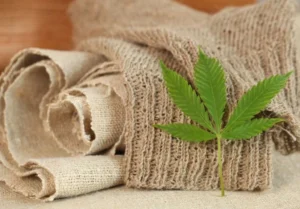Welcome to our exploration of cannabis curiosities. In this article, we will take you on a fascinating journey into the intriguing aspects of the cannabis plant, delving into lesser-known facts and unveiling its hidden secrets. Whether you are a cannabis enthusiast or simply curious about this remarkable plant, prepare to discover a world of knowledge and wonder.
Throughout history, cannabis has captivated the attention of cultures and communities worldwide. From its ancient origins to its modern-day applications, this plant has a rich and complex story to tell. Join us as we uncover the mysteries surrounding cannabis and unlock its hidden potential.
Key Takeaways:
- Cannabis is a plant with intriguing secrets and undiscovered curiosities.
- Exploring the history and origins of cannabis provides valuable insights into its cultural significance.
- The scientific aspects of cannabis reveal its unique chemical composition and effects on the human body.
- Understanding the cultivation process takes us from seed to harvest and unveils the art of growing cannabis.
- Discovering curious cannabis strains from around the world opens up new possibilities and experiences.
The History and Origins of Cannabis
Cannabis, a plant with a rich and storied past, has traversed the corridors of time, its origins deeply intertwined with ancient civilizations. Let us embark on a journey through the annals of history, shedding light on the fascinating history of cannabis and its remarkable origins.
Ancient archaeological discoveries provide evidence of cannabis cultivation dating back thousands of years. The early uses of cannabis were diverse and multifaceted, spanning medicinal, spiritual, and recreational purposes.
“Cannabis, a plant of many virtues, carried both practical and sacred significance throughout numerous civilizations.”
In ancient China, cannabis was used for its medicinal properties, with records dating as far back as 2700 BCE. The Chinese pharmacopeia classified cannabis as one of the “Superior Elixirs of Immortality,” emphasizing its therapeutic potential.
Similarly, in ancient India, cannabis held a sacred place in religious rituals and spiritual ceremonies. The Atharva Veda, one of the oldest Indian scriptures, mentions cannabis as a divine plant that bestows joy and liberation.
As the world turned, cannabis spread its influence across civilizations. The plant found its way to ancient Egypt, where it was utilized for medicinal and religious purposes. Egyptian scrolls from the second millennium BCE reveal cannabis being employed as a remedy for various ailments.
Fast forward to the present day, and the widespread use of cannabis continues. Its journey through history has witnessed moments of stigma, prohibition, and resurgence, underscoring its enduring relevance in contemporary society.
Origins Unveiled: Tracing the Ancient Roots of Cannabis
Botanically, cannabis belongs to the Cannabaceae family, a lineage that includes other notable plants such as hops. The genus Cannabis comprises several species, including Cannabis sativa, Cannabis indica, and Cannabis ruderalis.
While the exact geographic origins of cannabis remain debated among scholars, it is believed to have originated in Central and South Asia. The foothills of the Himalayas, in present-day India, Nepal, and Pakistan, are often regarded as the cradle of cannabis.
The ancient Silk Road, an extensive network of trade routes connecting Asia with Europe, played a pivotal role in the spread of cannabis. As merchants traversed the Silk Road, they carried cannabis seeds and plant cuttings, gradually introducing the plant to new regions and cultures.
Ancient Civilizations and Cannabis
| Civilization | Significance of Cannabis |
|---|---|
| Ancient China | Medicinal and spiritual use |
| Ancient India | Religious and cultural significance |
| Ancient Egypt | Medicinal and religious use |
Cannabis, with its roots firmly planted in ancient civilizations, has stood the test of time. Today, as it continues to evolve, cannabis presents a tapestry of possibilities, sparking curiosity and inspiring exploration into its myriad uses and effects.
The Science Behind Cannabis
When it comes to understanding cannabis, it’s essential to explore the science of cannabis. This fascinating plant contains a complex chemical composition that contributes to its various effects on the human body.
Cannabis consists of more than 100 unique compounds known as cannabinoids. The most well-known cannabinoids are THC (tetrahydrocannabinol) and CBD (cannabidiol). THC is responsible for the psychoactive effects commonly associated with cannabis use, while CBD is non-psychoactive and has potential therapeutic benefits.
The science of cannabis involves studying the mechanisms by which these cannabinoids interact with the body’s endocannabinoid system. This system plays a crucial role in regulating various physiological processes, including mood, appetite, pain sensation, and immune function.
Research suggests that THC binds to specific receptors in the brain, producing its psychoactive effects. CBD, on the other hand, does not bind to these receptors directly but may influence the functioning of the endocannabinoid system in other ways.
Cannabis strains can vary in their cannabinoid composition, resulting in different effects on the body. Sativa strains are generally known for their energizing and uplifting effects, while indica strains are associated with relaxation and sedation. Hybrid strains combine characteristics of both sativa and indica.
Furthermore, the science of cannabis extends beyond cannabinoids, with other compounds like terpenes contributing to the plant’s unique aroma and potential therapeutic properties. Terpenes are aromatic compounds found in various plants, including cannabis, and may play a role in the entourage effect, where the combined presence of multiple compounds enhances their overall impact.
As the science of cannabis continues to evolve, researchers are uncovering new insights into how this plant interacts with the human body. Studies are exploring cannabis’s potential for pain management, anxiety relief, epilepsy treatment, and even as a potential adjunct therapy for cancer patients.
Whether you’re a cannabis enthusiast or simply curious about its scientific underpinnings, understanding the science of cannabis can provide valuable insights into this ancient and versatile plant.
Types of Cannabis Strains
There are three main types of cannabis strains: sativa, indica, and hybrid.
| Strain Type | Characteristics |
|---|---|
| Sativa | Uplifting, energizing, cerebral effects, often used during the day |
| Indica | Relaxing, sedating, body-focused effects, often used in the evening |
| Hybrid | Combines characteristics of both sativa and indica strains |
Cannabis Cultivation: From Seed to Harvest
Embarking on the journey of cannabis cultivation is a deeply rewarding experience. Whether you’re a seasoned gardener or a curious beginner, understanding the intricate process of nurturing cannabis plants from seed to harvest is essential. In this section, we will guide you through the art of cannabis cultivation, providing valuable insights and tips to help you achieve a successful yield.
Choosing the Right Seeds
The first step in cannabis cultivation is selecting high-quality seeds. With countless strains available, each offering unique characteristics and effects, it’s crucial to choose seeds that align with your desired outcome. Consider factors such as growth patterns, cannabinoid content, desired aromas, and flavors when making your selection.
“The choice of seeds is the foundation of a successful cannabis cultivation journey. Take the time to research and explore different strains, ensuring they meet your specific needs and preferences.” – Matthew Johnson, experienced cannabis grower
Nurturing the Seedlings
Once the seeds have been chosen, it’s time to germinate them and nurture the seedlings. Create an optimal environment by providing a stable temperature, adequate lighting, and appropriate humidity levels. Be gentle with the delicate seedlings, ensuring they receive sufficient water and nutrients for healthy growth.
Vegetative Stage: Promoting Growth
During the vegetative stage, your cannabis plants will experience rapid growth. Ensure they have ample space to spread their roots and access to abundant light. Consider implementing training techniques, such as topping or low-stress training, to encourage bushier and more productive plants.
Flowering Stage: Preparing for Harvest
As your plants transition into the flowering stage, their focus shifts from growth to flower production. Provide the appropriate lighting schedule to trigger the flowering process, typically 12 hours of light followed by 12 hours of uninterrupted darkness. Monitor the plants closely, ensuring they receive the necessary nutrients and maintaining ideal temperature and humidity levels.
“The flowering stage is a critical time for cannabis cultivation. Pay attention to the subtle changes in your plants’ development, adjust nutrients accordingly, and maintain a consistent environment to maximize bud production.” – Sarah Thompson, professional cannabis cultivator
Harvesting: The Moment of Reward
After weeks of diligent care and anticipation, the time for harvest finally arrives. Harvesting cannabis involves carefully selecting the optimal harvest window, usually determined by observing the trichomes. Trim the plants, remove excess foliage, and hang them in a well-ventilated space to dry. Once properly dried, the buds can be cured for enhanced flavor and potency.
In conclusion, cannabis cultivation is a labor of love that requires patience, knowledge, and attention to detail. By selecting the right seeds, nurturing seedlings, promoting growth during the vegetative stage, preparing for flowering, and executing a successful harvest, you can achieve a bountiful and rewarding yield. Embrace the art of cannabis cultivation and embark on a journey that connects you to the ancient traditions and secrets of this remarkable plant.
Curious Cannabis Strains Around the World
When it comes to cannabis, we often associate it with popular strains like OG Kush or Girl Scout Cookies. However, the world of cannabis is vast and diverse, with numerous lesser-known strains waiting to be discovered. Join us on a global journey as we explore some of the most curious cannabis strains from around the world.
1. Durban Poison
“Durban Poison is a landrace strain hailing from South Africa, specifically the port city of Durban. Known for its energizing effects and sweet aroma, this strain is highly sought after by cannabis enthusiasts worldwide.”
With its vibrant green buds and deliciously fruity scent, Durban Poison offers a unique experience that uplifts and invigorates the mind. Its sativa-dominant genetics provide a burst of creativity and focus, making it an ideal choice for daytime use.
2. Malana Cream
“Originating from the high-altitude valleys of the Parvati region in the Indian Himalayas, Malana Cream is a rare strain known for its potent effects and distinct flavor profile.”
This indica-dominant strain is cherished by hash connoisseurs for its exceptional resin production, resulting in a creamy texture and a rich aroma. The effects of Malana Cream are deeply relaxing and calming, making it a favorite choice for stress relief and unwinding after a long day.
3. Red Congolese
“Red Congolese is a sativa-dominant strain that originates from the Democratic Republic of Congo. It is revered for its uplifting and euphoric effects, often described as a ray of sunshine in a cannabis strain.”
This strain is characterized by its vibrant red hairs and dense buds. Red Congolese offers a unique sensory experience, with its citrusy and spicy flavor profile further enhancing its euphoric effects. It’s popular among those seeking a creative boost or an uplifting mood enhancer.
These are just a few examples of the intriguing cannabis strains found across the globe. From the African continent to the Himalayas, each strain carries its own story and unique characteristics that make it worth exploring.
So, whether you’re an adventurous cannabis enthusiast or simply curious to broaden your horizons, these lesser-known strains offer a world of discovery. Expand your cannabis repertoire and embark on an exploration of these curious strains that showcase the remarkable diversity of the cannabis plant.
Surprising Uses of Cannabis Beyond Recreation
While cannabis is commonly associated with recreational use, its applications extend far beyond just getting high. This versatile plant offers a myriad of uses in various industries, including medicine, manufacturing, and even culinary pursuits.
Medicinal Marvels
One of the most significant and well-known uses of cannabis is in medicine. The plant contains compounds called cannabinoids, which interact with our body’s endocannabinoid system to produce therapeutic effects. These cannabinoids, such as THC and CBD, have been found to alleviate pain, reduce inflammation, and help manage symptoms of various medical conditions, including epilepsy, chronic pain, and multiple sclerosis.
The field of medical cannabis continues to evolve, with ongoing research exploring its potential in treating cancer, neurodegenerative disorders, and mental health conditions such as anxiety and PTSD. As more studies are conducted and regulations are adapted, cannabis-based medications are becoming increasingly accepted and available to those in need.
Industrial Innovations
Aside from its medicinal properties, cannabis also has numerous industrial applications. Hemp, a variety of cannabis with low levels of THC, is particularly versatile. Its fibers can be used to create textiles, rope, paper, and even building materials. Hemp oil can be found in beauty products, while its seeds are a nutritious source of protein and healthy fats.
The eco-friendly nature of hemp cultivation, requiring minimal pesticides and water, makes it an attractive option for sustainable manufacturing. As the demand for environmentally conscious products increases, industries are turning to hemp as a renewable alternative to traditional materials.
Cannabis in the Kitchen
Cannabis has found its way into the culinary world, offering a unique experience for adventurous food enthusiasts. Infusing cannabis into oils, butter, or other ingredients can add a distinct flavor and aroma to dishes. From decadent desserts to savory delights, cannabis-infused recipes have gained popularity among a niche group of culinary connoisseurs.
It’s important to note that cannabis edibles should be consumed responsibly and in moderation, as the effects can be more potent and longer-lasting compared to other forms of consumption.
Cannabis and Society: Legalization and Impact
Cannabis legalization continues to be a hot topic of discussion around the world. As attitudes toward cannabis evolve, so do the laws and policies surrounding its use. This section explores the social and legal aspects of cannabis, shedding light on the growing movement toward legalization and the impact it has on individuals and communities.
The Road to Legalization
In recent years, there has been a significant shift in public opinion regarding cannabis. As more scientific research emerges, highlighting the potential medical benefits and debunking common misconceptions, many countries and states have been reconsidering their stance on cannabis. This has led to a wave of cannabis legalization efforts across the globe.
The impact of cannabis legalization extends beyond recreational use. Legalization presents an opportunity for governments to regulate and tax the cannabis industry, generating revenue and creating jobs. It also allows for the implementation of quality control measures to ensure consumer safety.
The Ripple Effect on Communities
The legalization of cannabis has far-reaching effects on individuals and communities. One of the most significant impacts is the potential for criminal justice reform. By decriminalizing cannabis possession and usage, individuals who were once disproportionately affected by harsh drug policies can be spared from unnecessary legal repercussions.
Furthermore, cannabis legalization has the potential to stimulate economic growth in communities. From cultivation and distribution to retail and ancillary services, the cannabis industry creates employment opportunities in various sectors. This can revitalize struggling economies and empower local communities.
Addressing Concerns and Challenges
While the legalization of cannabis presents numerous opportunities, it also comes with challenges. As with any substance, responsible use and education are crucial. Regulations that restrict access to minors and promote safe consumption practices can mitigate potential risks and ensure the well-being of individuals and communities.
Another concern often raised is the potential for increased cannabis use among young people. However, studies from regions where cannabis has been legalized show mixed results, with some indicating a decrease in youth consumption due to stricter regulations and education campaigns.
Looking Ahead
As more countries and states embrace cannabis legalization, there is still much to learn about its long-term impact on society. Ongoing research and data analysis will continue to inform the development of responsible policies and regulations.
Overall, cannabis legalization represents a multi-faceted issue with significant social and economic implications. By examining the impact of cannabis on individuals and communities, we can foster informed conversations and make evidence-based decisions to shape a responsible and inclusive future.
Cannabis Legalization Status Around the World
| Country | Legalization Status |
|---|---|
| Canada | Legal for recreational and medical use |
| Uruguay | Legal for recreational and medical use |
| Netherlands | Legal for recreational use (in coffee shops) |
| United States | Legal for recreational and/or medical use in certain states |
| Germany | Legal for medical use |
| Australia | Legal for medical use |
Conclusion
Throughout this exploration of cannabis curiosities, we have uncovered a wealth of intriguing secrets about this remarkable plant. From its ancient origins and historical significance to the scientific understanding of its chemical composition and effects, cannabis continues to captivate our curiosity.
We have also explored the art of cannabis cultivation, from selecting the perfect seeds to nurturing the plants and harvesting the buds. Along the way, we have encountered a diverse array of cannabis strains from around the world, each with its own unique qualities and effects.
Beyond its recreational use, we have discovered surprising and diverse applications of cannabis, including its medicinal properties, industrial uses, and even culinary delights. From a societal perspective, the growing movement toward cannabis legalization and its impact on individuals and communities have been thought-provoking topics.
As we conclude this journey, we hope that our exploration of cannabis curiosities has provided you with a deeper understanding of this intriguing plant. Whether you approach cannabis from a historical, scientific, or cultural perspective, there is always more to learn and discover. So, let the journey continue as we unveil even more of the secrets held within the world of cannabis.
FAQ
What are some surprising facts about cannabis?
Cannabis has been used for thousands of years for various purposes, including medicine, spirituality, and textiles. It is also one of the oldest cultivated crops in the world.
Where did cannabis originate?
Cannabis is believed to have originated in Central Asia, specifically in the regions of present-day Mongolia and Siberia.
How does cannabis affect the human body?
Cannabis contains compounds called cannabinoids that interact with receptors in the brain and body, producing various effects such as relaxation, pain relief, and increased appetite.
How can I grow cannabis at home?
To grow cannabis at home, you’ll need the right seeds, suitable growing conditions (including light, temperature, humidity), and proper care and maintenance throughout the plant’s life cycle.
Are there different types of cannabis strains?
Yes, there are countless cannabis strains, each with its own unique combination of cannabinoids and terpenes, resulting in different flavors, aromas, and effects.
Can cannabis be used for medical purposes?
Yes, cannabis has been used for centuries for its medicinal properties. It can be used to alleviate symptoms of various conditions, such as chronic pain, nausea, and muscle spasms.
What are some industrial uses of cannabis?
Cannabis plants can be used to make paper, textiles, biofuels, building materials, and even biodegradable plastics.
Is cannabis legal in all countries?
Cannabis laws vary from country to country. While some nations have legalized cannabis for medical and/or recreational use, others still have strict regulations and penalties in place.





